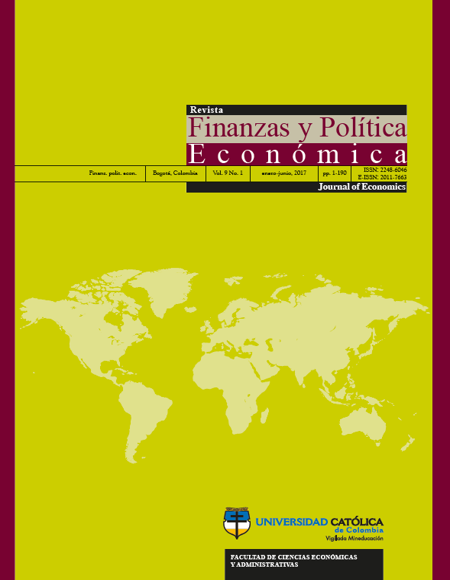
This work is licensed under a Creative Commons Attribution-NonCommercial-ShareAlike 4.0 International License.
This journal is licensed by a Creative Commons Attribution License (CC BY-NC-SA 4.0) Attribution-Non Commercial 4.0 International. For the CC licenses, the principle isthe creative freedom. This system complements the copyright without opposing it, conscious of its importance in our culture. The content of the articles is the responsibility of each author, and does not compromise in any way, to the journal or the university. It allows the transmission and reproduction of titles, abstracts and full content, with academic, scientific, cultural ends, provided acknowledgment of the respective source. This work cannot be used for commercial purposes.
They journal does not charge authors for submission or publication.
Abstract
This article seeks to answer two questions: Has the process of regional integration in Mercosur since its launch with the Treaty of Asunción (1991) contributed to reducing disparities in per capita income among countries in the region? Has there been convergence via intra-zone trade? To do this, it was necessary to review the theoretical framework of integration and to seek explanations that would justify the Mercosur integration process under the customs union scheme and its link with convergence. Integration is understood here as an economic process influenced by the productive structures of countries, whose pattern of trade responds to the allocation of resources of the sectoral structure of production. Using the fixed effects model, it was observed that regressions do not show the existence of β-convergence in the GDP per capita of the set of countries. Additionally, a model was estimated based on the global open data index and intra-regional openness index. The results do not reveal conditional β-convergence for the set of countries. The paper concludes that Mercosur has not favored the growth of countries in terms of GDP per capita.

References
Arias, C. (2008). Asimetrías en el Mercosur: un enfoque macroeconómico. En F. Masi y M. I. Terra (coords.), Asimetrías en el Mercosur: ¿impedimento para el crecimiento? (pp. 43-85). Montevideo: Red Mercosur de Investigaciones Económicas.
Blyde, J. (2007). Convergence dynamics in Mercosur. Journal of Economic Integration, 21(4), 784-815. https://doi.org/10.11130/jei.2006.21.4.784
Bouzas, R. y Pagnotta, E. (2003). Dilemas de la Política Comercial Externa Argentina. Buenos Aires: Siglo XXI, Fundación OSDE y Universidad de San Andrés.
Brida, J. et al. (2012). Convergencia interregional en dinámica de regímenes: el caso de Mercosur [MPRA Paper 36863]. Recuperado de https://mpra.ub.uni-muenchen.de/36863/
Corden, W. (1965). Recent developments in the theory of international trade (1.a ed.) Nueva Jersey: Universidad de Princeton.
Cresta, J. (2008). Asimetrías en el Mercosur. Un enfoque macroeconómico. En En F. Masi y M. I. Terra (coords.), Asimetrías en el Mercosur: ¿impedimento para el crecimiento? (vol. 12, pp. 41-85). Montevideo: Red MERCOSUR.
De La Fuente, A. (2000). Convergence across countries and regions: Theory and empirics. EIB Papers, 5(2), 25-46.
Díaz B., A. (2003). Apertura comercial y convergencia regional en México. Comercio Exterior, 53(11), 995-1000.
Karras, G. (1997). Economic integration and convergence: Lessons from Asia, Europe and Latin America.
Journal of Economic Integration, 12(4), 419-432. https://doi.org/10.11130/jei.1997.12.4.419
Lipsey, R. (1960). The theory of customs unions: A general survey. Economic Journal, 70. https://doi. org/10.2307/2228805
Mayorga , M. y Muñoz , E. (2000). La técnica de los datos de panel: una guía para su uso e interpretación. San José: Banco Central de Costa Rica.
Meade, J. (1955). The theory of international economic policy. Oxford: Oxford University Press.
Meade, J. (1956). The theory of customs unions. Ámsterdam: North-Holland Publishing Company.
Montero, R. (2011). Efectos fijos o aleatorios: test de especificación. Granada: Universidad de Granada.
Ramón, C. (2003). Convergence or regional disparities in Argentina and Brazil: The implications for Mercosur. Londres: Royal Institute of international Affairs.
Sachs, J. D. y Warner, A. M. (1995). Economic convergence and economic policies. https://doi.org/10.2139/ssrn.1479610
Sala-i-Martin, X. (2000). Apuntes de crecimiento económico. Madrid: Antoni Bosch.
Schiff, M. y Winters, L. (2003). Regional integration and development (3.a ed.). Washington: Banco Mundial y Oxford University Press. https://doi.org/10.1596/0-8213-5078-1
Venables, A. (2000). Winners and losers from regional integration agreements. Londres: Londres School of Economics and CEPR.
Viner, J. (1950). The Custom Union Issue. Nueva York: Carnegie Endowment for International Peace.
Wooldridge, J. (2001). Introducción a la econometría: un enfoque moderno (vol. I). Ciudad de México: Cengage Learning Editores.





























